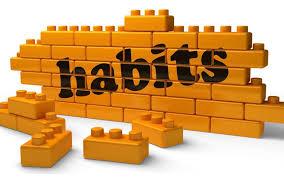The Power of Identity-Based Habits
Creating lasting change often goes beyond merely altering behaviors; it involves transforming our self-image and identity. Identity-based habits, as discussed by James Clear in “Atomic Habits,” emphasize the importance of aligning our habits with the person we want to become. This article explores the concept of identity-based habits and how to leverage them for profound and lasting personal growth.

What Are Identity-Based Habits?
Identity-based habits focus on changing who you believe you are rather than just what you do. Instead of setting goals based on outcomes (e.g., “I want to lose 10 pounds”), you shift your focus to the type of person who achieves those outcomes (e.g., “I am a healthy person”). By adopting this mindset, your habits become a reflection of your identity, making them more sustainable and integrated into your life.
Why Identity-Based Habits Work
The power of identity-based habits lies in their ability to create a strong foundation for behavior change. When your habits align with your identity, they become part of your self-concept and are more likely to stick. Here’s why this approach is effective:
1. Consistency with Self-Image: When you see yourself as a certain type of person, you’re more likely to act in ways that are consistent with that self-image. This consistency reinforces the habit and makes it easier to maintain.
2. Internal Motivation: Identity-based habits tap into intrinsic motivation. Instead of relying on external rewards or punishments, you’re driven by a desire to stay true to who you believe you are.
3. Long-Term Commitment: Focusing on identity fosters long-term commitment to change. Rather than being driven by short-term goals, you’re motivated by a deeper sense of self-improvement and personal growth.
How to Develop Identity-Based Habits
1. Define Your Desired Identity: Start by clarifying the type of person you want to become. Be specific about the qualities and characteristics that define this identity. For example, you might want to be a “fit and active person” or a “mindful and calm individual.”
2. Align Habits with Identity: Identify habits that align with your desired identity. Think about the actions and behaviors that someone with this identity would naturally perform. For instance, if you want to be a fit and active person, your habits might include regular exercise, healthy eating, and staying hydrated.
3. Start Small: Begin with small, manageable habits that reflect your desired identity. These habits should be easy to incorporate into your daily routine. For example, if you want to be a writer, start by writing for just a few minutes each day.
4. Reinforce Your Identity: Consistently perform habits that align with your desired identity and reinforce your self-image. Each action you take is a vote for the type of person you want to become. Over time, these small votes accumulate and strengthen your new identity.
5. Monitor and Reflect: Regularly assess your progress and reflect on how your habits are shaping your identity. Adjust your habits as needed to ensure they continue to align with your desired self-image. Use a journal or habit tracker to document your journey.
Examples of Identity-Based Habits
To illustrate the concept, here are a few examples of identity-based habits:
– Healthy Person:
– Habit: Exercise for 20 minutes each day.
– Identity: “I am someone who prioritizes my health and well-being.”
– Productive Person:
– Habit: Plan the day’s tasks every morning.
– Identity: “I am an organized and productive individual.”
– Mindful Person:
– Habit: Meditate for five minutes daily.
– Identity: “I am a mindful and present person.”
– Lifelong Learner:
– Habit: Read for 15 minutes each day.
– Identity: “I am someone who values knowledge and personal growth.”
Overcoming Challenges with Identity-Based Habits
While identity-based habits are powerful, they can also present challenges. Here are some common obstacles and strategies to overcome them:
1. Imposter Syndrome: Feeling like you’re not truly the person you want to become is natural. Overcome this by focusing on small, consistent actions that reinforce your desired identity.
2. Lack of Immediate Results: Identity change is a gradual process. Be patient and recognize that each small step is contributing to your long-term transformation.
3. Negative Self-Talk: Challenge negative thoughts that undermine your new identity. Replace them with positive affirmations and remind yourself of your progress.
Conclusion
Identity-based habits are a transformative approach to behavior change, focusing on becoming the person you want to be rather than merely achieving specific outcomes. By aligning your habits with your desired identity, you create a strong foundation for lasting change. Define your desired identity, start small, and consistently reinforce your new self-image. Embrace the power of identity-based habits and watch as they lead to profound personal growth and a more fulfilling life.